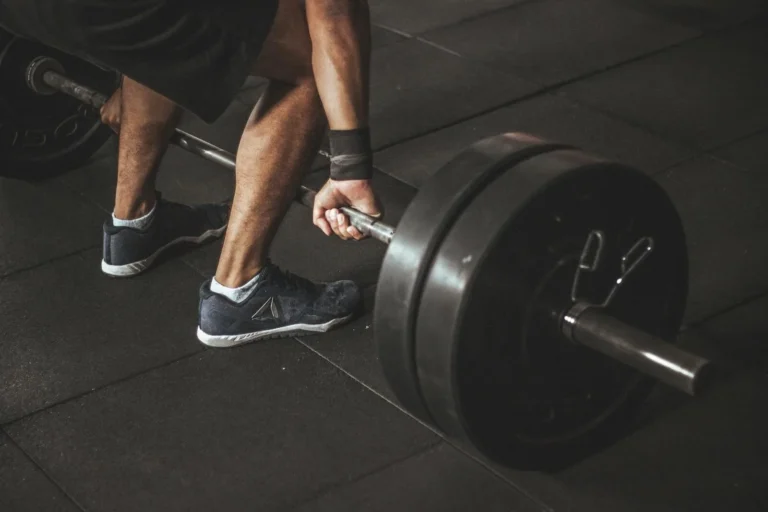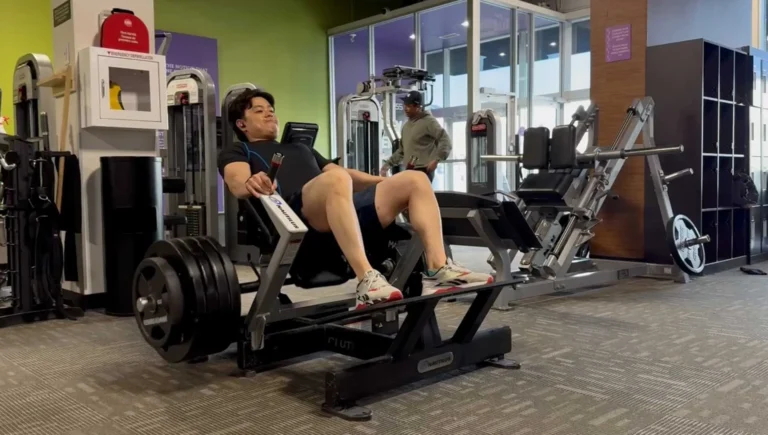With age, your body undergoes significant changes that can impact your ability to build and maintain lean muscle. Understanding the biological factors at play, such as hormonal shifts and metabolic rate decline, is crucial for formulating an effective strategy. Incorporating smart nutrition, strength training, and recovery methods can optimize your muscle growth potential. By focusing on these elements, you can effectively combat muscle loss and promote a healthier, stronger body as you age.
Key Takeaways:
- Prioritize strength training to stimulate muscle growth and maintain muscle mass.
- Incorporate adequate protein intake and balanced nutrition to support muscle repair and development.
- Focus on recovery, including sleep and rest days, to optimize muscle gains and prevent injury.
The Biological Shift: Muscle Growth After 30
After 30, your body experiences a biological shift that affects muscle growth. This transition can challenge your workout efforts as hormonal levels and metabolic rates change, leading to potential difficulties in gaining lean muscle mass. Understanding these changes empowers you to adapt your fitness regime, ensuring you maintain muscle health well into your later years.
Hormonal Changes and Their Impact
Declining levels of hormones such as testosterone and growth hormone after 30 significantly influence muscle growth. Lower testosterone levels can lead to reduced muscle protein synthesis, making it harder for you to build muscle and maintain strength. Additionally, estrogen fluctuations in women can also affect body composition and recovery rates, requiring a more tailored approach to your fitness routine.
Metabolism Slowdown: The Aging Factor
Your metabolism naturally slows with age, largely due to decreased muscle mass and hormonal shifts. This slowing metabolism means your body burns fewer calories at rest, urging a reevaluation of your diet and exercise intensity to prevent unwanted weight gain and maintain muscle development.
Specifically, after 30, muscle mass decreases at a rate of approximately 3-8% per decade, primarily linked to hormonal reductions. This decline further impacts metabolism; for every decade, your resting metabolic rate can decrease by about 5%. To counter this slow down, incorporating strength training into your routine is vital. Building muscle increases your resting metabolic rate, allowing you to burn more calories even while at rest. Engaging in high-intensity workouts and adequate protein intake becomes vital to stimulate muscle growth and combat age-related metabolic decline.
Essential Nutritional Strategies for Lean Muscle
Building lean muscle after 30 relies heavily on an effective nutrition strategy tailored to your body’s changing needs. A focus on whole foods, adequate macronutrient intake, and timing can help optimize your muscle-building potential. Prioritizing protein sources while balancing carbohydrates and fats provides your muscles with the energy and building blocks necessary for growth and recovery. Incorporating nutrient-dense foods will ensure you maximize your training efforts and support overall health as you progress in your fitness journey.
Macronutrient Ratios for Optimal Gains
Striking the right balance of macronutrients is crucial for muscle development. Aim for a diet consisting of approximately 30% protein, 50% carbohydrates, and 20% healthy fats. This ratio supports muscle repair and energy replenishment post-workout. Protein-rich sources like lean meats, legumes, and dairy should be incorporated, while complex carbs such as whole grains and starchy vegetables provide sustained energy, ensuring your body stays fueled during workouts.
Timing Your Nutrient Intake: The Anabolic Window
The concept of the anabolic window highlights the critical period after your workout when nutrient intake is most beneficial for muscle growth. Consuming protein and carbohydrates within 30 to 60 minutes post-exercise can significantly enhance muscle repair and glycogen replenishment. This optimal timing aids in maximizing recovery and helps to stimulate muscle protein synthesis, ensuring that the hard work you put in at the gym translates to visible gains.
The anabolic window acts as a prime opportunity for muscle recovery and growth. After a workout, your muscles are primed to absorb nutrients, making it the perfect time to consume a meal or shake rich in protein and carbohydrates. Aim for around 20-30 grams of protein and a balanced dose of carbohydrates to replenish glycogen stores, with studies showing that this practice can enhance muscle growth by up to 25%. Leveraging this window effectively can transform your training outcomes, leading to more significant, faster results as you focus on building lean muscle after 30.
The Role of Resistance Training: Adapting Your Routine
Incorporating resistance training into your fitness routine is crucial for building lean muscle after 30. This type of training maximizes muscle recruitment and stimulates growth, compensating for the natural decline in anabolic hormones. Aim for at least two to three sessions per week, focusing on compound movements like squats, deadlifts, and bench presses. Adjust intensity and volume according to your progress, ensuring you challenge your muscles adequately while allowing for adaptations.
Effective Training Techniques for Muscle Confusion
Muscle confusion prevents adaptation and promotes continuous growth by varying your exercise routine. Incorporate different training styles like circuit training, supersets, or plyometrics. Additionally, switching up the number of repetitions and sets, altering rest periods, and varying your grip can keep muscles guessing and ensure consistent results. Research indicates that regularly changing your routine can lead to increased muscle activation and hypertrophy over time.
Importance of Recovery: Rest Days and Active Recovery
Recovery plays a pivotal role in muscle-building success, particularly as you age. Integrating rest days and active recovery into your training plan allows your muscles to repair and grow. Aim for at least one full rest day each week, supplemented with light activities like walking or yoga to promote blood flow and reduce stiffness.
The recovery process might include strategies like foam rolling and stretching to alleviate muscle soreness and increase flexibility. Prioritizing sleep is equally important, as growth hormone levels peak during deep sleep, aiding in tissue repair. Research suggests that inadequate recovery can lead to diminished performance and increased risk of injury, especially for those over 30. Balancing training intensity with adequate recovery fosters optimal muscle growth and overall well-being.
The Psychological Aspect: Mindset and Motivation
Your mindset plays a pivotal role in successfully building lean muscle after 30. A positive attitude and strong motivation can significantly influence your training consistency, adaptability, and overall progress. Believing in your ability to reach your goals enhances your persistence, helping you push through challenges and setbacks. Cultivating a growth mindset allows you to embrace the learning process, leading to more effective strategies and a greater sense of accomplishment.
Overcoming Mental Barriers to Training
Many people face mental barriers that hinder their training efforts. Fear of injury, feelings of inadequacy, or past failures can create significant obstacles. Identifying these barriers is the first step towards overcoming them. You can gradually build confidence by setting smaller, achievable milestones. This shift in focus facilitates a more positive training environment and fosters resilience, empowering you to tackle the weights with determination.
Setting Realistic Goals and Monitoring Progress
Setting realistic goals is vital for maintaining motivation as you build muscle. Break larger ambitions into smaller, manageable milestones, making it easier to track progress and celebrate achievements along the way. Regularly reviewing your progress, such as tracking lifting numbers or body measurements, reinforces your dedication and spurs you on to tackle the next challenge.
Utilize the SMART criteria—Specific, Measurable, Achievable, Relevant, Time-bound—to structure your goals effectively. For instance, if your aim is to increase your bench press, specify a target weight and timeframe, such as adding 10 pounds over four weeks. Documenting your workouts not only provides a tangible record of your efforts but also serves as a motivational tool, highlighting improvements that keep you engaged and focused on your long-term endeavors in building lean muscle.
Innovations in Muscle Building: Supplements and Technology
Modern advancements have transformed how you approach muscle building, combining science with technology. Innovative supplements and wearable devices now provide insights into your progress, optimizing your fitness journey. By integrating evidence-based products and real-time tracking, you can tailor your routines for maximum gains and efficiency.
Evidence-Based Supplements for Enhanced Results
Incorporating evidence-based supplements like whey protein, creatine, and branched-chain amino acids (BCAAs) can significantly enhance your muscle-building efforts. Studies show that whey protein can increase muscle protein synthesis, while creatine has been linked to improved strength and recovery. Choosing quality supplements based on scientific research empowers you to make informed decisions for optimal results.
Tracking Progress with Wearable Technology
Utilizing wearable technology like fitness trackers and smartwatches enhances your ability to monitor workouts accurately. These devices can measure metrics such as heart rate, calories burned, and muscle engagement, allowing you to adjust your training in real-time. By analyzing this data, you can identify patterns, recognize areas for improvement, and stay motivated throughout your muscle-building journey.
Wearable technology provides a clear picture of your fitness progress through data analytics. For instance, some devices can track workout intensity and caloric burn while offering insights into recovery times, ensuring you do not overtrain. Specific metrics, like strength performance over time and frequency of workouts, can also guide your decisions, allowing you to adjust your regimen for continuous improvement. This use of smart technology empowers you to take charge of your fitness journey effectively.
Final Words
The science of building lean muscle after 30 emphasizes the importance of strategic training, balanced nutrition, and recovery. As you age, your body requires more intentionality in exercise and nutrient intake. Incorporating resistance training, prioritizing protein in your diet, and allowing adequate rest will enhance your muscle-building potential. By understanding how your body functions and adapting your approach accordingly, you can effectively achieve and maintain muscle growth well into your later years.
FAQ
Q: What are the most effective workout strategies for building lean muscle after 30?
A: Incorporate strength training at least 2-3 times per week, focusing on compound movements like squats, deadlifts, and bench presses. Aim for progressive overload by gradually increasing weights and varying rep ranges. Adding high-intensity interval training (HIIT) can also boost muscle growth while improving cardiovascular health.
Q: How important is nutrition when trying to build lean muscle after 30?
A: Nutrition is vital for muscle growth; prioritize adequate protein intake (about 1.6 to 2.2 grams per kilogram of body weight) from high-quality sources such as lean meats, fish, dairy, beans, and legumes. Additionally, include healthy fats and complex carbohydrates to support overall energy levels and recovery.
Q: How does recovery impact muscle growth for those over 30?
A: Recovery plays a significant role in muscle growth, especially after 30. Aim for 7-9 hours of quality sleep each night to facilitate muscle repair and hormone balance. Incorporating rest days and active recovery techniques, such as yoga or light walking, can also enhance performance and reduce the risk of injury.
















































